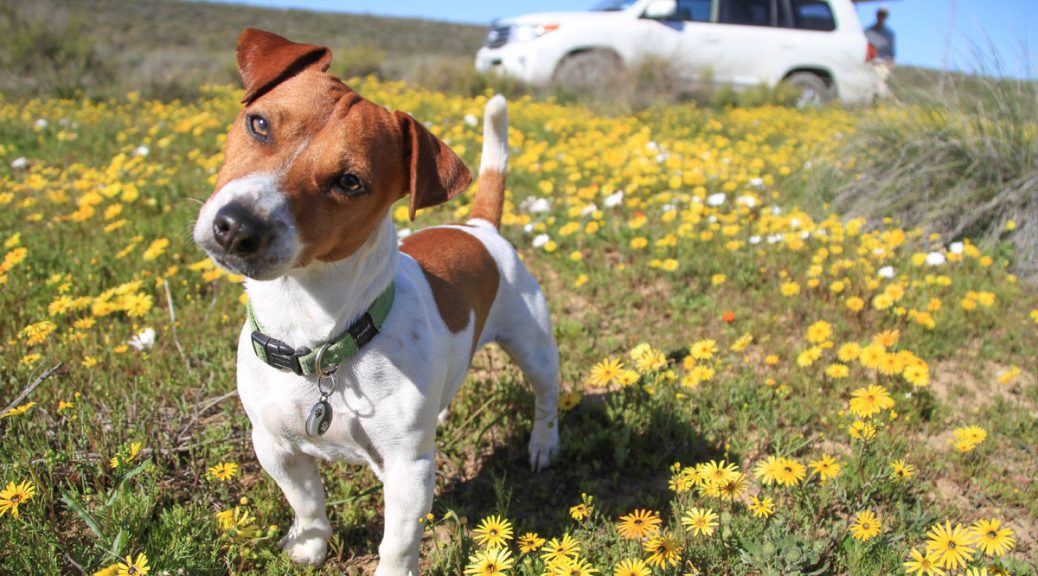The very moment interprovincial travel became possible again, we packed a punch with Namaqua flowers, Kalahari dunes and Karoo highlands. After five months of Covid-19 lockdown, we treated our two pups to a 4,000 km road trip for their first birthday. By Romi Boom
Home today, safari tomorrow. Our first road trip after lockdown was conceived at the drop of a hat. But we simply couldn’t do it without our furry kids – the pups had become our lifeline during the stay-at-home months. Glowing reports about this year’s exceptional spring blooms in Namaqualand convinced us to head for the Kalahari via the West Coast flower spectacle with the dogs in tow.
Pet friendly accommodation is readily available on many guest farms, and I phoned ahead to enquire whether Obi, the Jack Russell, and Panda, the Australian shepherd, would be welcome. We were turned away by only one proprietor who cited ducklings and goslings around the homestead – understandably not a scenario to be risked.
We departed the Cape of Storms in the rain and headed for Nieuwoudtville. The car carried supplies for an eight-night trip and the dogs had their own duffle bag filled with coats, cookies, meaty treats and toys. Their beds were on the back seat and cargo platform in the rear of the Cruiser respectively. We found that this arrangement worked very well and the two regularly swapped spots.

Pups among the Namaqua flowers
Nieuwoudtville was festooned in vivid colours. Although the kind folks at the information office in the grounds of the Dutch Reformed Church recommended we head straight for the farmstall at Matjiesfontein, 12km out of town, I took delightful photos around the church where the pups enjoyed their first good run since we left home.

Having detoured to the Nieuwoudtville waterfalls and chiselled gorge, we had ample time to reach Loeriesfontein. After a pit stop at the well-stocked Spar to buy firewood for our evening braai we checked in at Rock Ridge Manor; in no time whatsoever Obi and Panda were sniffing around the village’s vast vacant lots. Our intrepid explorers basically had the run of the wide streets to themselves. On one of the smallholdings, a chilled out horse in a winter blanket tested the courage of the little Jack. So far, so good.
The next morning we headed north on good though utterly remote gravel roads. Twice we stopped to let the pups out, both times farmers in bakkies pulled up to chat and invited us to stay on their farms. Unfailingly kind, hospitable and smiling. “We never see anybody,” they admitted, “so we love to talk to strangers. It’s been tough in Bushmanland for a number of years, we are so grateful for the rains.”
Falling for the Kamiesberge
To reach Kamieskroon, we had to cross the Kamiesberge, which we found to be way more beautiful than the Cederberg mountains. At the crest of the range the hamlet of Leliefontein, with its 150-year-old Baptist Church and donkey carts, proved to be a rewarding sideshow. This was so much better than the N7!
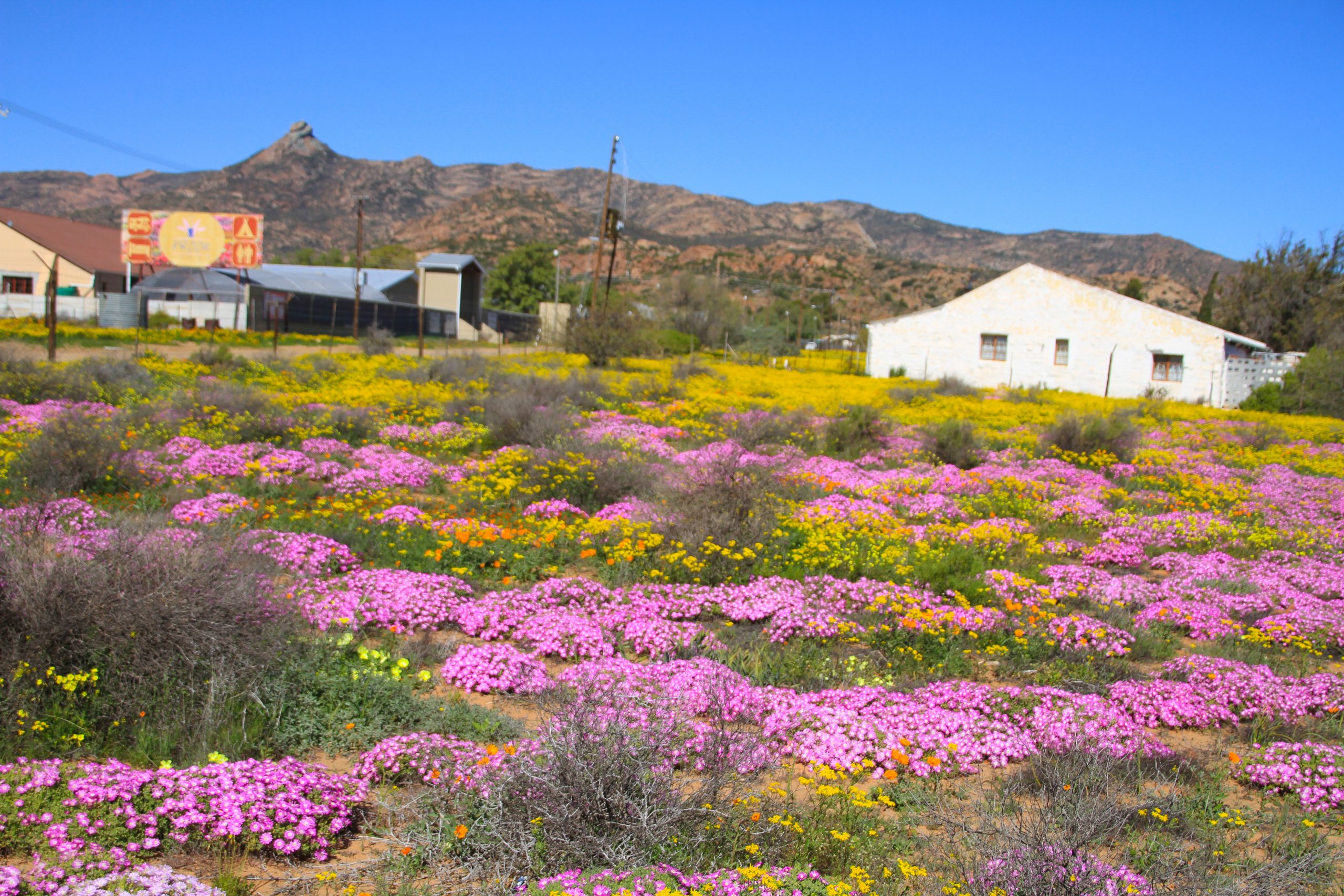
After bingeing on the Kamieskroon floral display (yes, this is the acme, the very best place to go this flower season!), the roadside blooms had us ooh-ing and aah-ing all the way to Springbok. At Sperrgebiet Lodge, a few kilometres short of town, our dogs had the run of the farm. They even brought four new friends along on our evening walk among the boulders and quiver trees that dot the mountainous terrain.
Discovering the Kalahari dunes
The next day was a long drive to the Kalahari so we hit the road at daybreak. Beyond Upington the options for leg stretching are few and far between, with Norokei pan saltworks offering a welcome open gate to pull into. The weather warmed up steadily as we approached the Kgalagadi Lodge, where we’d often stayed with our previous canine kids. For the next four days, cleaning ladies Bokkie Abrahams and Katrina de Klerk took excellent care of the dogs during the day while we entered the Kgalagadi Transfrontier Park as day visitors, having secured our SANParks permits before leaving home.
In the afternoons the little kids on the premises regaled us with wide-eyed stories about the daytime activities of Obi and Panda. Dogs climbing trees? Yup, the branches of the shepherd’s trees (witgatboom) absolutely invite canines to chase geckos. Further entertainment, and a cardiac arrest moment, was provided when the dogs spotted their first eland, kudu, springbok, blouwildebeest, zebra and emu on the lodge premises. A few rebukes later and the novelty wore off. They did us proud!
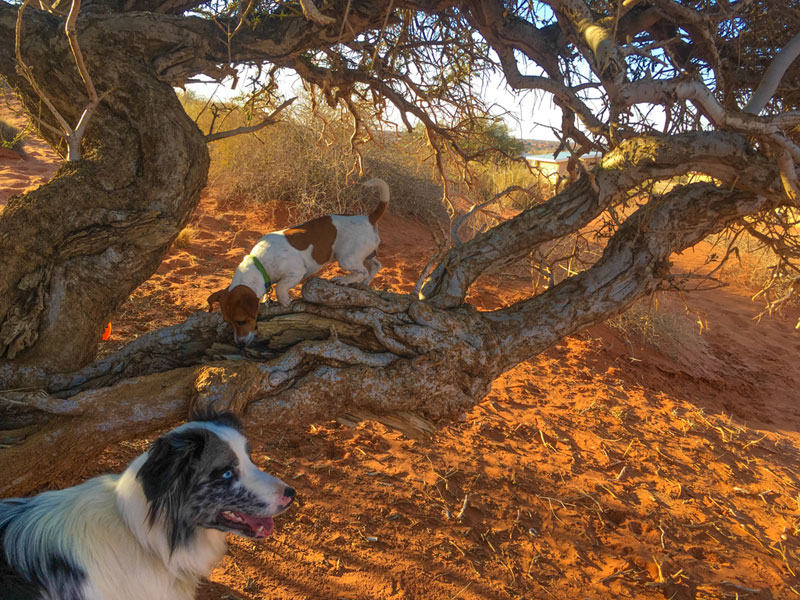
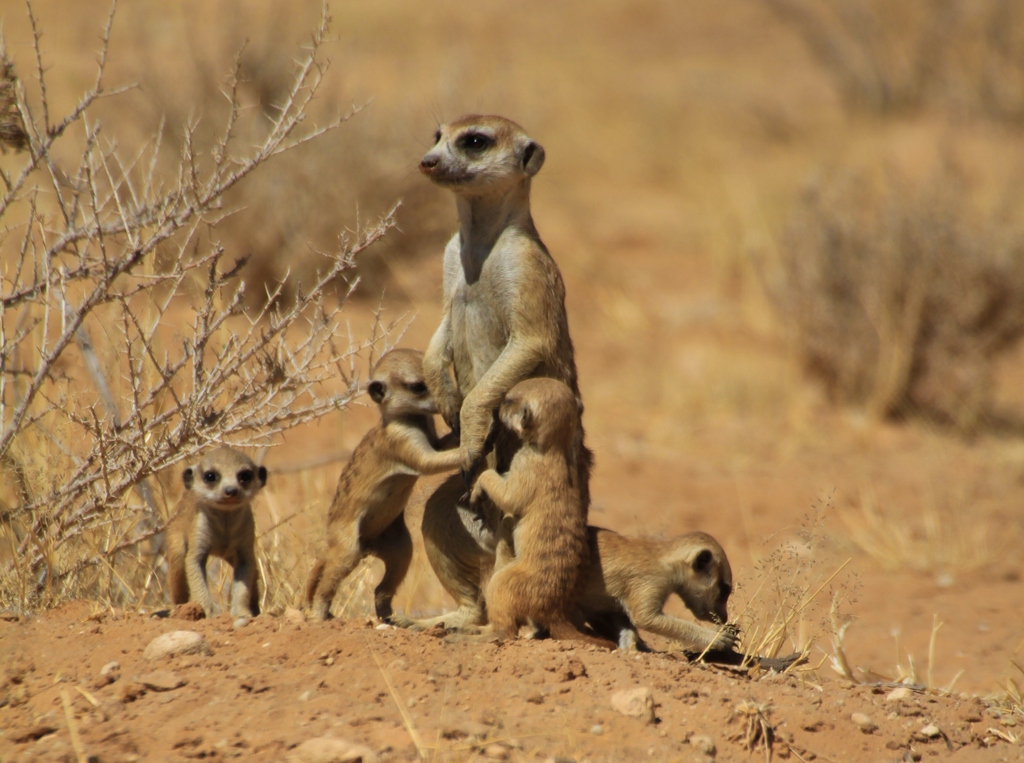
Lazy afternoons gazing across red Kalahari dunes drifted into balmy evenings in shorts and flip-flops in front of the braai fire. This was the life, and having been deprived, we appreciated it all the more. We soaked up the heat and each time we thought about the bitterly cold Cape winter, we couldn’t imagine ever leaving. The only one who needed adjusting to the warm climate was our Aussie shepherd: Panda soon started sleeping in the shower at night.
Homeward via the Karoo highlands
We wound our way home on interminable gravel roads through the Karoo highlands. From Kenhardt Tracks4Africa took us to Vanwyksvlei, Carnarvon and Loxton, Fraserburg and Sutherland. We wondered whether T4A would list tiny Osfontein and, yes, it did! Our farmstay in a 200-year-old corbelled house on Osfontein outside Carnarvon ticked all the boxes.
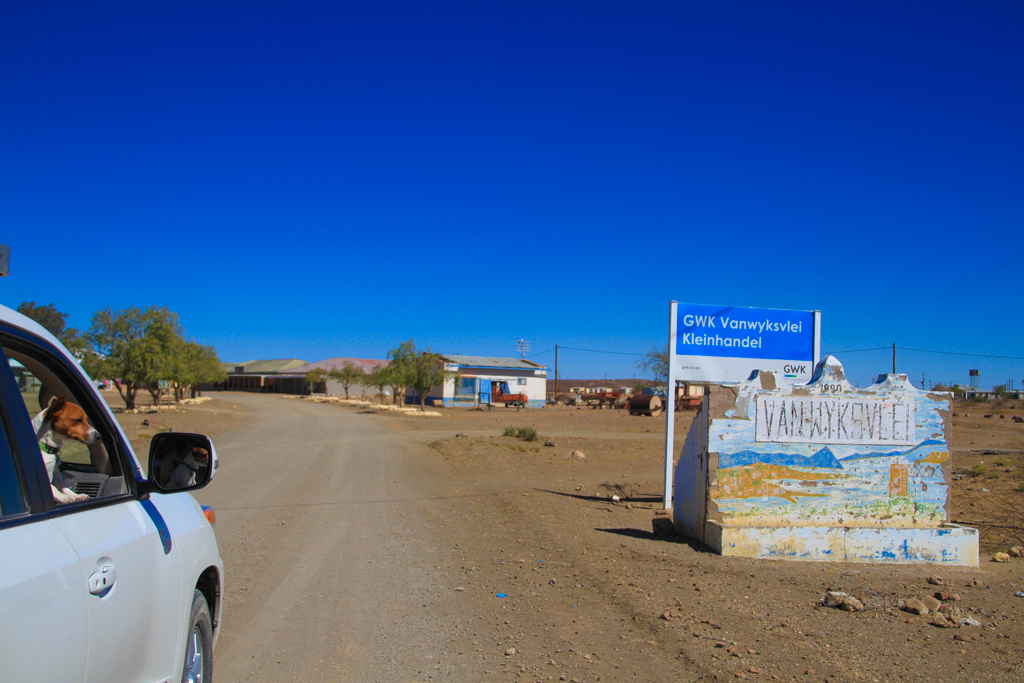

Built entirely of stone, the beautifully restored corbelled house was surprisingly cosy once we had a fire going in the indoor braai. Apart from one electric bedside lamp, all light is provided by candles. Creature comforts include hot water bottles and piping hot showers. Oh yes, and the three border collies that welcomed us on arrival chose to befriend our canines; the fun and games didn’t stop until well beyond twilight.
In the morning it was minus 3 degrees and we washed down thick frost from the windscreen. Outside Fraserburg, on one of our midmorning pit stops, Panda thought it was a jolly good idea to jump into a sheep trough by the roadside, for a bracing swim (I checked, it was 4 degrees). We could only shake our heads. Our blue-eyed boy was having the time of his life. Darling Obi, short-haired though snug in a fleecy jacket, seemed to pine for the Kalahari, like his mom. We’re already plotting the next road trip to a hot spot.
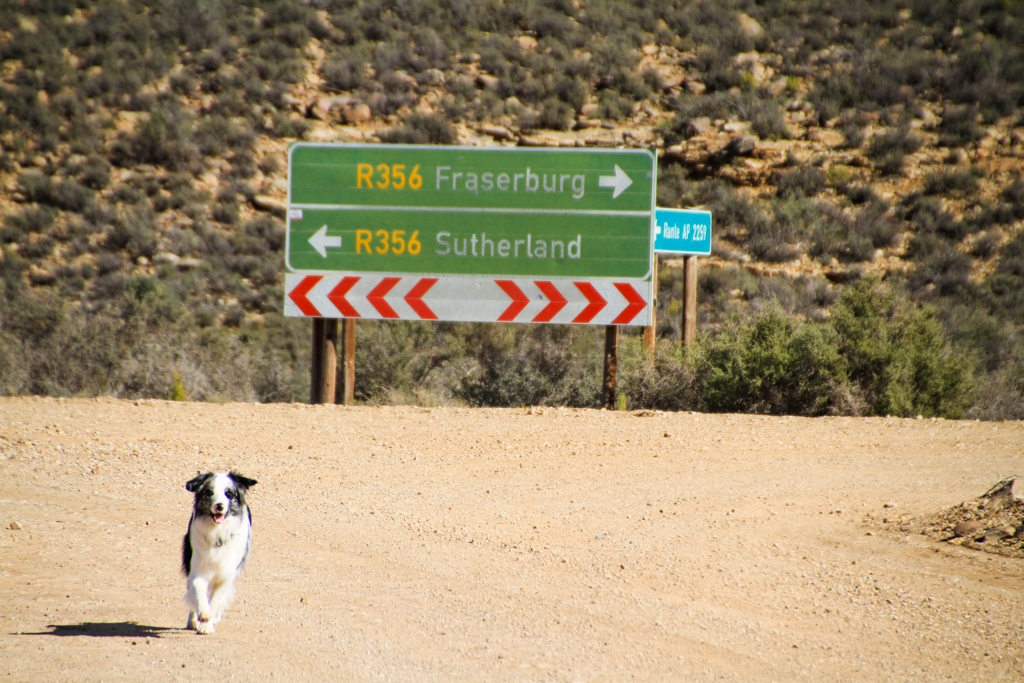
Tips for travels with dogs
- Plan your trip with time delays for 15 minute pit stops every three hours at the very least.
- Always pack a stack of old towels and dog shampoo. You’ll be spending a lot of time with the pooches in a confined space.
- Keep a collapsible water bowl and a water bottle on hand, although they probably won’t drink much when you’re travelling.
- Soft chewy treats work better than crumbly cookies in the car.
T4A’s Bessie Brand on overlanding with her dog
There’s nothing better than seeing your fur baby live it up in the great outdoors, says Tracks4Africa’s Bessie Brand, who regularly travels with her dog, Debbie, a border collie.
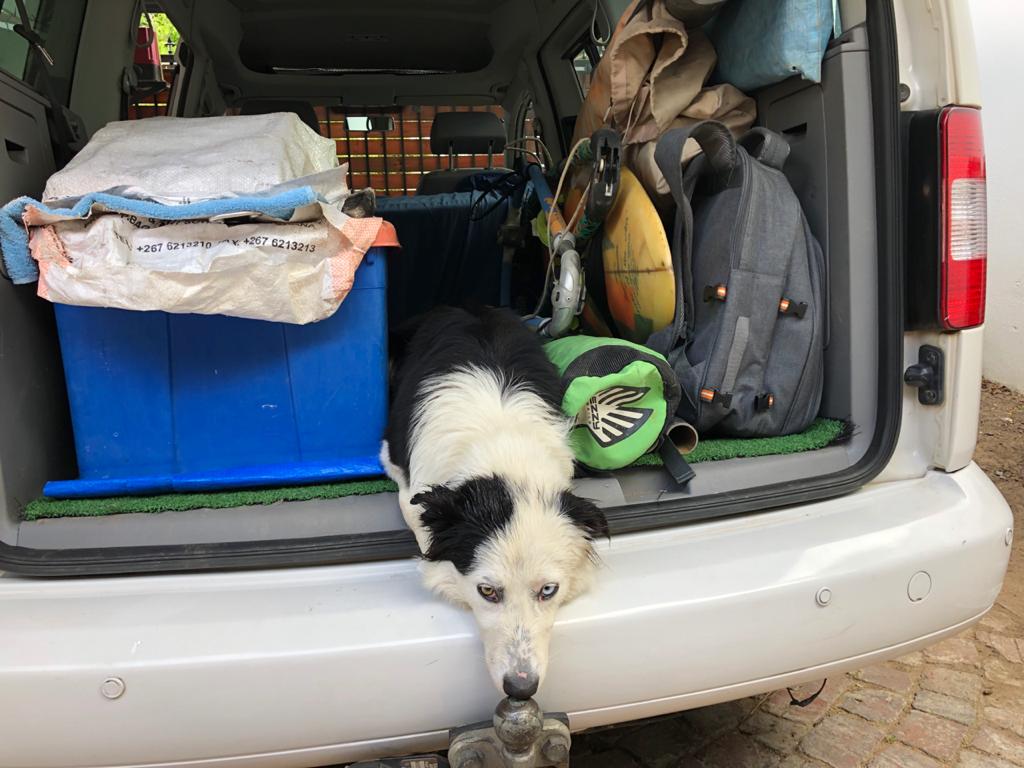
“If you’re planning on overlanding with your dog, make sure it is socialised from an early age. Your pup must be used to other dogs and people and well trained. At dog-friendly campsites, you’re likely to find several other campers with dogs and if yours doesn’t behave, the owner may ask you to leave.
“Our dog loves playing in water, so we always look for a campsite close to the water’s edge, whether a dam or river. Be prepared for muddy footprints throughout your camp. And be on the lookout for snakes in the summer months.
When overlanding with her dog, Bessie prefers to stop every one to two hours.
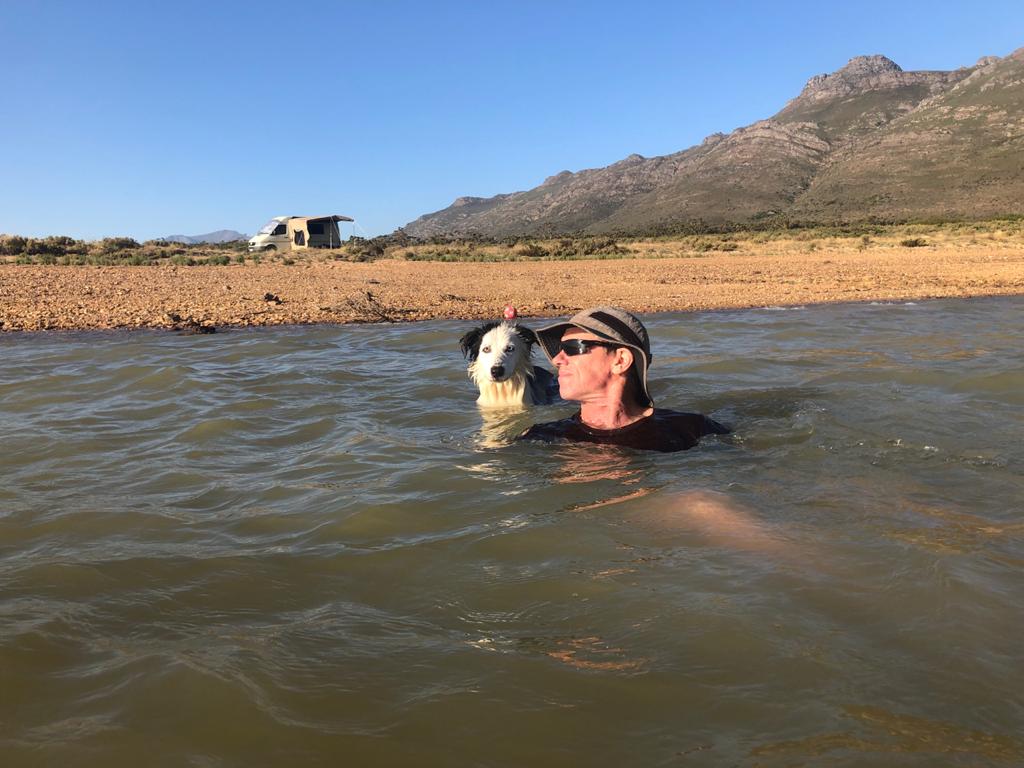
Explore impressive mountain passes, meandering country roads and paths off the beaten track with our maps – on GPS, paper or your phone.
